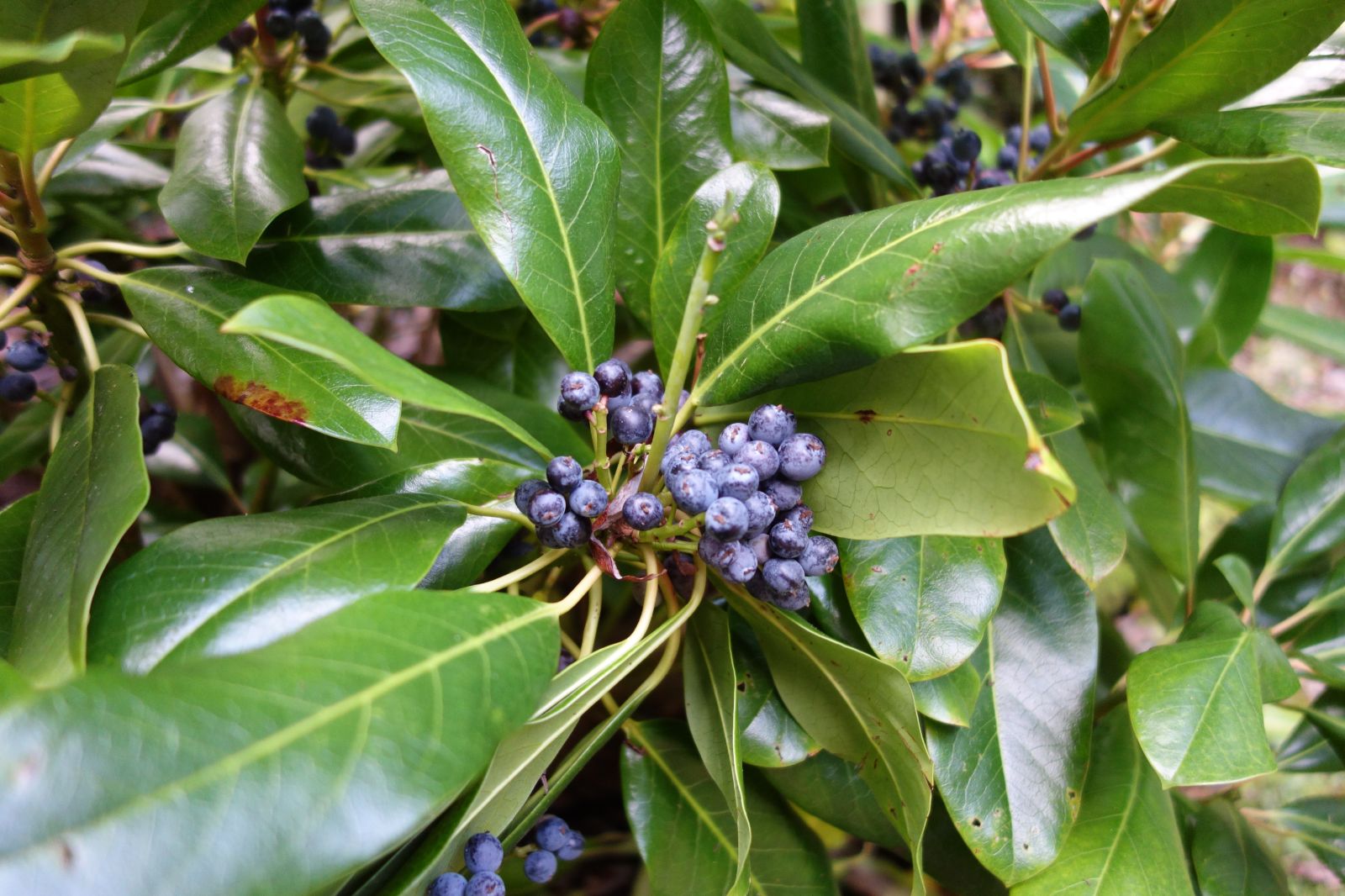Daphniphyllum humile
Credits
Article from Bean's Trees and Shrubs Hardy in the British Isles
Recommended citation
'Daphniphyllum humile' from the website Trees and Shrubs Online (treesandshrubsonline.
Genus
Synonyms
- D. macropodum var. humile (Maxim.) Rosenth.
- D. jezoense Hort. ex Bean
A low, much-branched, evergreen bush 6 to 7 ft high, but much more in width; quite glabrous in all its parts. Leaves oval or slightly obovate, 2 to 5 in. long, 3⁄4 to 2 in. wide, tapered at both ends, dark shining green above, with a glaucous bloom beneath; vein-pairs twelve to fifteen; stalk 3⁄8 to 5⁄8 in. long. Flowers not seen. Fruit blue-black, according to wild specimens.
Native of Yezo (Hokkaido), Japan, where, according to Sargent, it is a common undershrub in the deciduous forests; also of the north-western part of the main island (Honshu), and of Korea; introduced by Maries for Messrs Veitch about 1879. It is very distinct in habit from D. macropodum; a plant at Kew, of uncertain age but more than twenty years old, is only 3 ft high and 3 ft in diameter. It does not dislike moderate shade, and would make a useful, low, evergreen cover where such is required without the annual cropping that shrubs like laurels and rhododendrons need. It has been known in gardens as D. jezoense, and also considered a variety of D. macropodum, but I am unable to distinguish it from Maximowicz’s specimen of D. humile preserved at Kew; and that is the only species recorded from the Island of Yezo.



